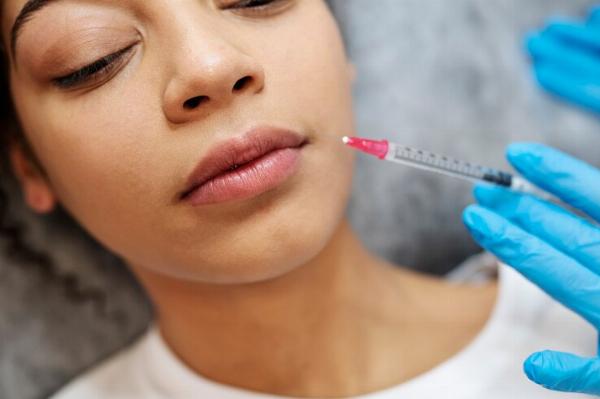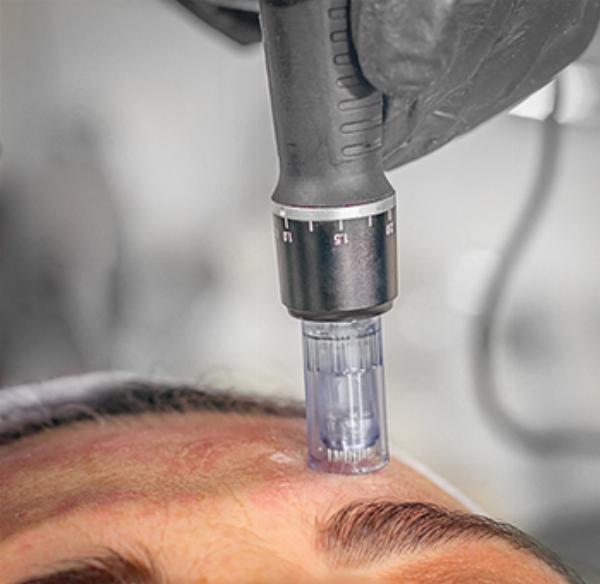 High-Converting Funnels – From Ad Click to Final Sale!
High-Converting Funnels – From Ad Click to Final Sale!
Is Hyaluronic Acid Good For Lip Fillers?
Written by adam deloach » Updated on: June 17th, 2025

Are you considering enhancing your smile with lip fillers but feeling overwhelmed by the options? If you've ever wondered whether hyaluronic acid is the magic ingredient for achieving plump, luscious lips, you're not alone! This popular substance has taken the beauty world by storm, promising hydration and volume like never before. But what exactly is hyaluronic acid, and how does it work in lip fillers? In this blog post, we’ll dive deep into the science behind this superstar ingredient and explore its benefits and potential drawbacks. Get ready to discover if hyaluronic acid is the secret weapon your pout has been waiting for!
Introduction to lip fillers and hyaluronic acid
Lip fillers have become a popular choice for many seeking that perfect pout. Whether it’s to enhance volume, shape, or simply boost confidence, these treatments are making waves in the beauty industry. But what gives lip fillers their magic? The answer often lies in hyaluronic acid. This powerful substance has garnered attention not only for its ability to hydrate and plump but also for its role as a key ingredient in many lip filler formulations.
If you’ve ever wondered about the connection between hyaluronic acid and those luscious lips you see on social media, you're not alone. Let’s dive into what makes this compound so special and why it's commonly chosen for enhancing lips!
What is hyaluronic acid and how is it used in lip fillers?
Hyaluronic acid is a naturally occurring substance in our bodies. It plays a crucial role in retaining moisture and providing elasticity to the skin. As we age, its levels decrease, leading to dryness and loss of volume.
In the world of cosmetic enhancements, hyaluronic acid has gained popularity for lip fillers. Dermatologists and aesthetic practitioners use it to create fuller, more defined lips. The gel-like consistency allows for smooth application without harsh effects.
When injected into the lips, hyaluronic acid binds with water molecules. This process instantly plumps up the area, giving a youthful appearance. Its ability to adapt means results can look incredibly natural or be tailored for dramatic changes based on individual preferences.
Moreover, one significant advantage is that it’s reversible! If clients aren’t satisfied with their new look, an enzyme called hyaluronidase can dissolve the filler seamlessly.
Benefits of using hyaluronic acid for lip fillers
Hyaluronic acid has gained popularity in the world of lip fillers for several compelling reasons. One of its main advantages is its ability to provide natural-looking results. Its gel-like consistency allows for smooth, even application, enhancing the lips without creating an artificial appearance.
Another benefit lies in its hydration properties. Hyaluronic acid attracts and retains moisture, which means your lips will not only look fuller but also feel softer and more supple. This added hydration can be especially appealing during dry seasons.
Additionally, hyaluronic acid fillers are reversible. If you’re not satisfied with the outcome or desire a change, an enzyme called hyaluronidase can dissolve the filler quickly and effectively.
Lastly, recovery times tend to be shorter compared to other types of injectables. Most patients experience minimal downtime, making it a convenient option for those with busy lifestyles wanting plump lips without long interruptions.
Potential risks and side effects of hyaluronic acid in lip fillers
Hyaluronic acid is popular for lip fillers, but it’s essential to understand the potential risks involved. Some people may experience swelling at the injection site. While this is often temporary, it can be uncomfortable.
Bruising is another common side effect. The needles used for injections might break small blood vessels, leading to discoloration that usually fades with time.
In rare cases, allergic reactions can occur. Symptoms may include redness or itching around the lips.
There’s also a risk of overfilling, which could lead to an unnatural appearance. Ensuring your practitioner has ample experience helps mitigate this issue.
Lastly, some individuals report lumpiness in their lips post-treatment. This can sometimes happen due to uneven distribution of product or if too much filler was used in one area. Always discuss these concerns with your provider beforehand.
How to prepare for a hyaluronic acid lip filler procedure
Preparing for a hyaluronic acid lip filler procedure involves a few simple steps to ensure the best outcome.
Start by scheduling a consultation with your practitioner. This is your chance to discuss your goals and ask any questions about the procedure. Understanding what to expect can ease any anxiety.
Avoid blood thinners like aspirin or ibuprofen for at least 24 hours before treatment. These medications can increase bruising and swelling, impacting your results.
Staying hydrated is essential too. Drink plenty of water in the days leading up to your appointment; it helps maintain skin elasticity.
Lastly, consider avoiding alcohol for 48 hours prior to treatment as it can exacerbate swelling and inflammation post-procedure. Being well-prepared will set you on the right track toward achieving those luscious lips you desire!
Aftercare tips for maintaining the results of your lip filler treatment
After receiving lip fillers, proper aftercare is essential for achieving the best results. Start by avoiding any strenuous activities for at least 24 hours. This helps minimize swelling and bruising.
Keep your lips hydrated. Use a gentle lip balm to maintain moisture without irritating the area. Drinking plenty of water also aids in overall hydration.
Steer clear of direct sunlight and tanning beds for a few days post-treatment. Sun exposure can affect healing and lead to unwanted pigmentation changes.
Refrain from touching or massaging your lips immediately after treatment. Allow the filler time to settle into place naturally.
Lastly, schedule a follow-up appointment with your practitioner if you have any concerns or questions about your results. Open communication can enhance your experience and satisfaction with the outcome.
Alternative options for lip fillers
If you're considering enhancing your lips but have reservations about hyaluronic acid fillers, there are several alternative options available. One popular choice is collagen-based fillers. These products use collagen, a protein that naturally occurs in the skin to provide volume and structure.
Another option includes fat transfer procedures. This method involves harvesting fat from another part of your body and injecting it into your lips. It offers a natural look since it's derived from your own body, although results may vary.
Silicone implants also exist as a more permanent solution for lip enhancement. However, they come with their own set of considerations regarding maintenance and potential complications.
Each alternative has its pros and cons, so it's essential to consult with a qualified professional before making any decisions. They can help you determine the best approach based on your individual goals and concerns.
Ultimately, whether you choose hyaluronic acid or one of these alternatives depends on what suits you best—your preferences, desired outcomes, and comfort level with each option will guide the way forward in achieving those luscious lips you've always wanted! learn more here - https://drkasia.co.uk/treatments/harmonyca
Note: IndiBlogHub features both user-submitted and editorial content. We do not verify third-party contributions. Read our Disclaimer and Privacy Policyfor details.
Copyright © 2019-2025 IndiBlogHub.com. All rights reserved. Hosted on DigitalOcean for fast, reliable performance.













